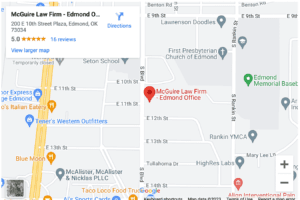What Is Negligence?

Negligence is the legal foundation of almost all personal injury cases. Unless you can prove that the party who caused your injury was negligent, you cannot recover compensation for your damages.
However, when multiple factors could have contributed to the cause of the accident or injury, proving negligence might be complicated. A personal injury lawyer investigates the cause of the injury to gather evidence that supports each of the four elements of negligence.
After proving negligence, your lawyer works with you to document damages, so you can seek maximum compensation for your injuries, non-economic damages, and financial losses.
Negligence and Personal Injury Claims
A person may be guilty of negligence if the person does something that a person of reasonable prudence would not do in the same or similar situation. The person may also be guilty of negligence if the person fails to do something a reasonable person would do in the same or similar situation.
Negligence is conduct that can result in harm to another person. When a party is guilty of causing someone harm, that party can be held financially liable for any damages caused by their actions or failure to act.
Creating a Chain of Causation
There are four legal elements required to prove negligence. Each element “links” to the next element to create a chain that establishes fault and liability.
Duty
The person who caused your injury must have owed you a legal duty. A legal duty is created when the relationship between parties creates an obligation for one party to exercise the same level of care that a reasonable person would exercise in a similar situation.
For example, doctors owe a duty of care to their patients, and nursing homes owe a duty of care to their residents to provide adequate care and treatment.
Motorists owe a duty of care to other drivers, pedestrians, bicyclists, and all others using the road, to obey all traffic laws. Dog owners have a duty of care to maintain control over their pets. Property owners owe a duty of care to visitors and guests to maintain safe premises. Designers and manufacturers owe a duty to consumers to provide safe products.
Breach of Duty of Care
Once a duty is established between the parties, the victim must prove that the at-fault party breached the duty of care. A breach of duty means that the person owing the duty did something or did not do something that put the other party in danger of injury or harm.
For example, a taxi driver goes to work after taking medication known to cause drowsiness and nods off while driving, causing a taxi accident. Another example of a breach of duty would be an employer failing to repair faulty wiring that the employer knew existed, resulting in a workplace accident.
Causation
Proving a duty existed and the other party breached the duty is only part of the chain that must be established to prove liability. The victim must also prove that the breach of duty directly caused the victim’s injuries and harm. For example, a speeding driver might run a red light and crash into another vehicle.
The speeding driver’s actions were the direct cause of the car accident that injured the victim. However, if another driver slams into the car in front of him because he is rubbernecking and looking at the crash, the speeding driver did not directly cause the car crash.
Proving causation for an accident or injury can be one of the most difficult requirements of proving negligence. If you cannot prove a direct link between the at-fault party’s actions and your injury, you do not have a negligence claim.
Damages
The final element of a negligence claim is damages. The victim must prove that the accident or injury resulted in damages. Unless you can prove that you were damaged because of the person’s breach of duty, you cannot prove negligence.
Damages in a personal injury case may include your physical injuries, pain, and suffering. However, they also include the financial losses, such as the cost of your medical treatment and personal care, loss of income, and other expenses related to the accident and your injury.
The value of your personal injury claim depends on a number of factors, including the total economic losses, the severity of your injury, and the assignment of fault for the cause of the accident.
Documenting damages is a key step in a personal injury claim. The more documentation you have for your damages, the better chance you have of recovering maximum compensation for a personal injury claim.
Working with an attorney who can gather evidence to prove each of the legal elements of negligence is the best way to protect your rights and best interests after an accident or injury.

